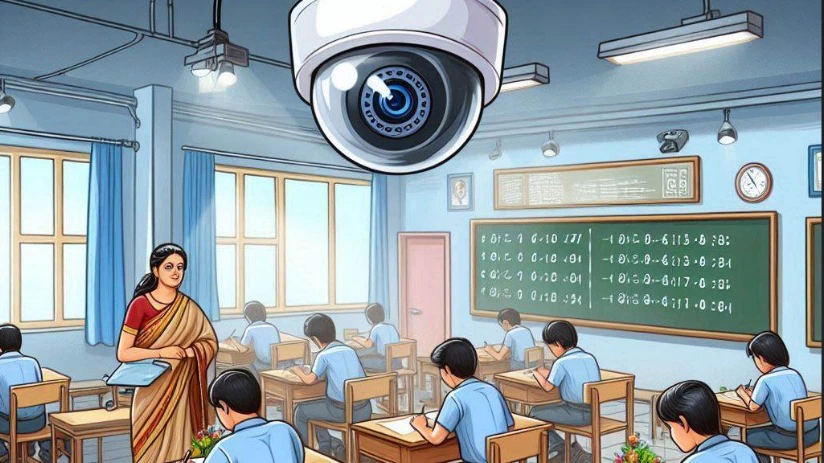
CBSE Mandates CCTV Cameras in All Affiliated Schools: A Major Step Toward Campus Safety
In a significant move to bolster campus security and child protection, the Central Board of Secondary Education (CBSE) has made the installation of CCTV cameras with audio-visual capabilities a mandatory requirement for all its affiliated schools. The new directive is part of an amendment to the CBSE Affiliation Bye-Laws 2018, specifically under Chapter 4, which outlines the physical infrastructure requirements for schools seeking or maintaining CBSE affiliation.
This decision isn’t just another policy update—it represents a strong commitment to creating safer, more secure learning environments across the country.
What the New Rule Says
According to the updated guidelines, high-resolution CCTV cameras with both video and audio recording must be installed in all key areas of school campuses. These include:
- Entry and exit gates
- Corridors and staircases
- Lobbies and waiting areas
- Classrooms and laboratories
- Libraries and canteen premises
- Playgrounds and store rooms
- Other common areas frequently accessed by students and staff
It’s important to note that toilets and washrooms are exempt from this rule to ensure privacy and dignity.
The system must support real-time surveillance and be connected to a storage mechanism that can retain recordings for at least 15 days. Schools are also responsible for maintaining backups of this footage and must be ready to present it to authorities if needed.
A Step in Line with Child Rights Guidelines
This directive aligns closely with recommendations from the National Commission for Protection of Child Rights (NCPCR), which had earlier emphasized the importance of CCTV systems in its Manual on Safety and Security of Children in Schools.
The NCPCR manual defines “school safety” as a comprehensive approach to protect children from physical harm, emotional distress, abuse, bullying, and even natural disasters—both within and outside school premises. The document highlights that emotional safety often remains unnoticed, making it all the more important to implement measures that provide holistic protection.
With this move, CBSE has essentially taken a recommendation from the child rights commission and given it the force of law—by tying compliance directly to school affiliation.
Why It Matters
The introduction of this CCTV mandate is more than just a surveillance measure. It aims to:
- Enhance vigilance on school premises
- Deter external and internal threats such as unauthorized entry, bullying, or harassment
- Assist school authorities in identifying safety concerns early
- Create a culture of accountability among students, staff, contractors, and visitors
- Support special needs students and other vulnerable groups through monitored assistance
CBSE has urged that the guidelines be implemented in both “letter and spirit,” meaning they expect not just technical compliance, but a genuine effort from schools to uphold student safety as a core institutional value.
Who Is Responsible?
Ensuring a safe school environment isn’t a one-person job—it’s a collective responsibility. CBSE has reiterated that school safety involves everyone:
- School management and principals
- Teachers and non-teaching staff
- Special needs assistants and counselors
- Contractors and support personnel
- Students and even visitors
Each individual has a role to play in making schools safe, inclusive, and emotionally supportive spaces for learning.
Looking Ahead
This move sets a strong precedent for how technology can be leveraged to create safe learning spaces without compromising on empathy or ethics. While concerns about surveillance and privacy will continue to be part of the broader conversation, the primary objective remains clear: safeguarding every child’s right to a secure and supportive education.
Schools affiliated with CBSE will now have to prioritize not only academic performance and infrastructure but also the well-being and security of their students—both physically and emotionally.
With implementation timelines expected to roll out soon, parents, educators, and administrators should begin preparing to integrate this critical safety component into everyday school functioning.
Also Read: DU Admissions 2025: Hindu College and SRCC Lead with Record-Breaking Cut-Offs
Also Read: GSEB HSC 12th supply result 2025 for General stream announced at gseb.org, direct link